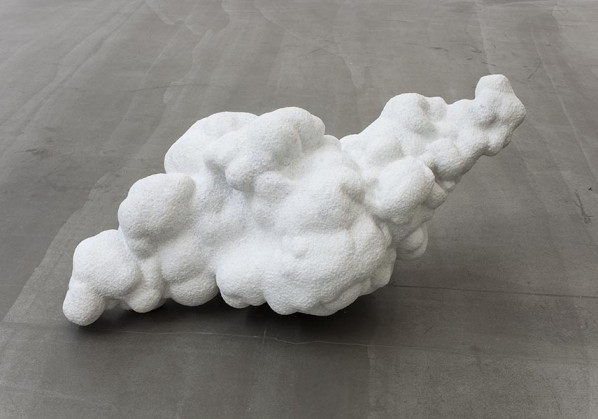
Hu Qinyang – Cloud, 2012
With the group exhibition Mármakos (the Greek word for “marble”) Galerie Urs Meile is showing a diverse selection of marble sculptures by Ai Weiwei, Hu Qingyan, Li Zhanyang, Liu Ding, and Not Vital. Marble has been a popular material for sculptures since the beginning of time in both Western and Chinese culture. In China marble from Dali is especially favored. Dali marble is known for its great variety and its natural striations of black and white. Often it is cut into slices and polished, and the various natural patterns seem to resemble mountains or rivers, a popular motive of Shanshui painting. Not Vital’s (*1948 in Sent, Engadin, Switzerland) works ((Landscape, 2014, marble, plaster, 126 × 65 × 22 cm; untitled, 2011, marble, plaster, 51 × 36.5 × 23 cm; Mountains, 2013, marble, plaster, 76 × 45 × 20 cm; Mountains, 2013, marble, plaster, 45.5 × 64.5 × 20.5 cm) are inspired by this tradition. Vital selected a slab of marble and set it in a three-dimensional plaster frame. The reliefs mounted on the wall are reminiscent of inverted windows in historic Engadin houses. Combining local materials with references to his home territory in Engadin, Switzerland, is a typical approach for Not Vital, who also has a studio in Beijing and spends time working there.
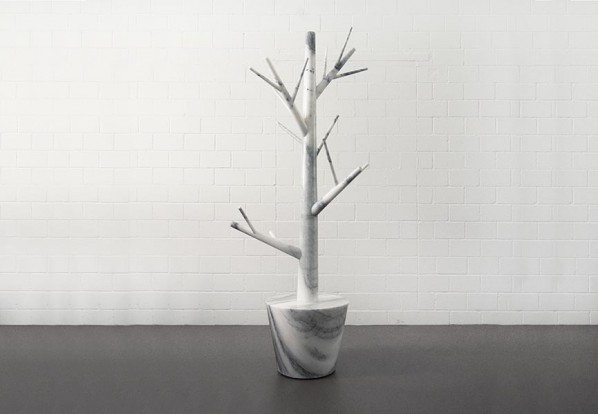
Ai Weiwei – Marble Tree, 2012
Chinese artist Ai Weiwei (*1957 in Beijing, China) likes to sculpt everyday objects out of marble, contrasting and ennobling the ordinary object by using the precious material (Marble Plate No. 4, 2009, marble, 28 × 50 × 28 cm). Ai Weiwei’s Marble Tree (2012, marble, 205 x 87 x 90 cm) is much more abstract than the sculptures of trees he has made out of wood or iron. But, as we can see with Ai Weiwei’s Marble Chair (No.5) (2008, marble, 125 × 52 × 50 cm), it is possible to produce very detailed work in marble. The realistic Marble Rebar (2012, marble, 11 × 57 × 20 cm) is a critical monument commemorating the Sichuan school corruption scandal. Because they were unprofessionally constructed, many school buildings collapsed during the Sichuan earthquake in 2008 and five thousand students died.
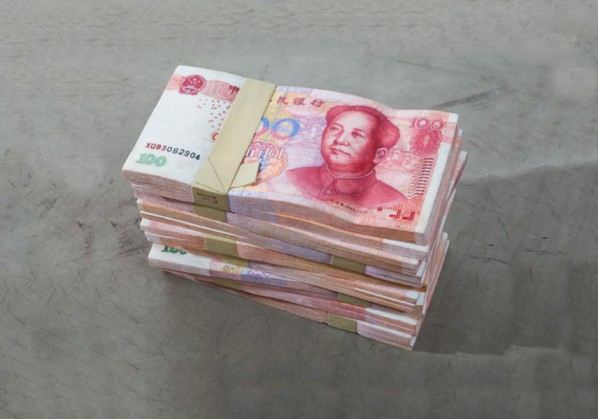
Li Zhanyang – 80’000 RMB, 2010
Li Zhanyang’s (*1976 in Changchun, Jilin province, China) 80’0000 RMB (2010, marble, 40 x 55 x 35, cm, edition 2/8), on the other hand, is a personal memorial. Once 80’000 RMB in cash were stolen out of Li Zhanyang’s cabinet. After a lengthy and unpleasant investigation by the police, the money suddenly reappeared in the same place and the same position. Li Zhanyang credited this miracle to a Christian policeman helping with the case and and the incident is recalled in the marble sculpture of a stack of money.
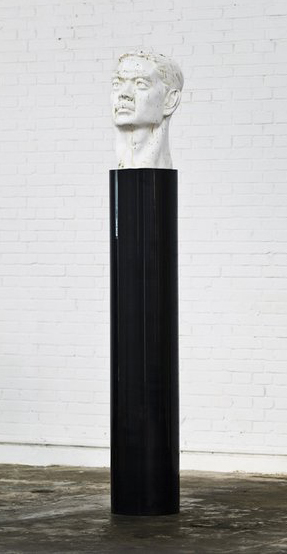
Liu Ding – Hero, 2007
The human body is a more traditional subject for marble, but, as the title suggests, Li Zhanyang chose a very unconventional part for his work, Marble Ass (2004, marble, 14 x 38 x 28 cm, edition 2/4). In contrast, Liu Ding’s (*1976 in Changzhou Jiangsu Province, China) Hero (2007, white marble, black marble [sculpture on base], 210 cm, ø 30 cm, edition 3/8) is at first glance an idealized and traditional marble sculpture. Liu Ding applied the rules of the Russian revolutionary sculpting tradition—which remains the primary style Chinese students study in art academies to this day—to the portrait of an anonymous person. For example, he enlarged the head 1.5 times, made it face the right at an angle of 45 degrees, and highlighted every facial feature. Furthermore he placed this “hero” bust outdoors for a period of time until it was covered with bird droppings and dust, thus giving the classic work a defiant and ironic twist.
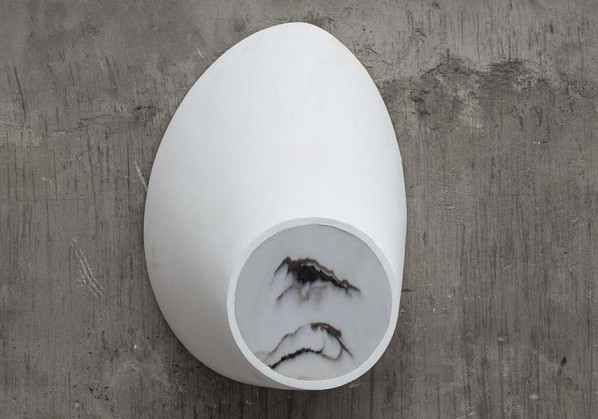
Not Vital – untitled, 2011
Hu Qingyan (*1982 in Weifang, Shandong province, China) studied sculpture with the same traditional approach, but has since developed his own conceptual idea of sculpture. Inspired by a dream in which he was flying through the sky, Hu Qingyan realized a self-portrait as a Cloud (2012, marble, 45 x 96 x 55 cm), because he wanted to make a sculpture that deals with the relationship between the image, mass, and the sculpture itself. The marble cloud with a matte finish has exactly the same amount of volume as the artist. Related to this idea is the work One Breath – Karin (2011, marble, 27 x 23 x 16 cm). One Breath is a series of portraits showing the lung capacity of the person portrayed. The works make it possible to visualize the amount of breath each person can hold. Hu Qingyan asks the people he is depicting to exhale once into a plastic bag. He then translates the bag into a marble sculpture.
About the exhibition
Duration: March 3 - May 9, 2015
Venue: Galerie Urs Meile
Courtesy of the artists and Galerie Urs Meile, for further information please visit http://galerieursmeile.com.




























